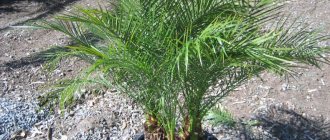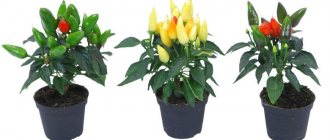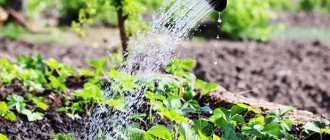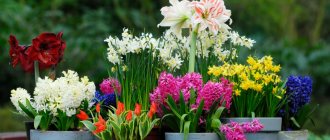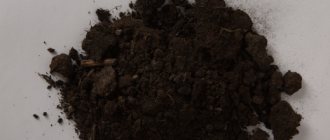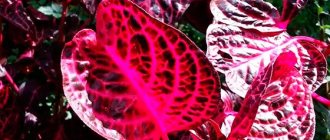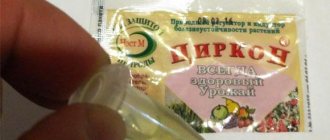Every apartment or house will look empty and uncomfortable if there are no indoor plants. Indoor plants enliven any room and create a unique microclimate.
You can add an elegant touch to the interior design of an apartment or house by using not only individual plants, but also compositions of indoor flowers. Designers and florists can combine small and large plants, smooth and prickly, flowering and non-blooming, bright and muted in shades.
The most important rule in this case will be that the plants can grow next to each other, and they will not have to be transplanted to other places.
Obviously, the rules for caring for plants in a composition with common soil should be the same. In the case of a combination of plants in their own pots, the space between them is filled with decorative material (sisal, colored pebbles, pebbles). Florists often use the latter option as a gift, combining potted plants in a large wicker basket.
Indoor plants in the interior of an apartment, correctly assembled into a single composition, represent a living decor that looks harmonious against the background of other things.
In order to create compositions from indoor plants, you need to understand what types of compositions there are and know the rules for their composition. Having learned this information, not only a florist, but also any gardener will be able to create beautiful mini-gardens from indoor flowers.
Types of compositions from indoor plants
Depending on the interior of the apartment, the florist chooses what type of composition will organically fit into the surrounding environment. The following types of compositions are distinguished:
1. Mini-garden of indoor flowers in one container.
Plants can accommodate:
- in the basket;
- in large or long pots;
- in a flowerpot;
- in containers of unusual shape (for example, figurines with a recess, wooden driftwood);
2. Vertical floral panels.
Subtypes of panels are:
- a flower picture is a light structure, inside of which there is earth; plants are planted in special holes. Watering is carried out from above the container.
- a living wall is a vertical garden, the design of which is more complex and can be divided into several compartments. Plants in a vertical garden require daily care and special drip watering;
3. Florariums are a group of plants planted in glass containers of various shapes. We talked about florariums in detail in this article.
4. Horizontal pot group - a group of flowers in pots located on one stand or pallet;
5. Vertical pot group - a group of flowers in pots arranged vertically or in a cascade.
Overview of landscaping types
You can decorate any home with flowers; you just need to take into account the size of the apartment and choose the right decor. With all the variety of indoor plants, there can be only two ways to place them.
Vertical
A good way for limited spaces. Flowers can be placed on long racks, high racks, or in flowerpots on the walls. There is even an option when they make a phytowall. But for this you need to create a special structure in which there will be soil with plants.
For vertical gardening, you can use stands, shelves and flowerpots made of wood, metal, and plastic. It all depends on the overall style of the room. For loft or hi-tech styles, metal is suitable, for Provence and shabby chic - wood.
Horizontal
The more common landscaping is horizontal. It allows you to place flowers on wide window sills, shelves or simply on the floor. These can be whole compositions or single plants, it all depends on their size. With this design, pots of different sizes and colors are used. In some cases, it is better to use pots of the same pattern to maintain a certain style, even if they are different sizes. And sometimes it is acceptable to use multi-colored flower pots, it all depends on the interior.
But nothing prevents you from using both types of landscaping. For example, large plants can be placed on the floor, and small flowers can be placed on the wall or high vertical stand. The main thing is that it looks harmonious. We should not forget that this is still an apartment, not a greenhouse, and the flowers in it are only additional decorative elements, but not the main ones. Moreover, these are not just decorations, they require care and maintenance. Otherwise, unkempt green spaces will give an overall very untidy look to the entire interior.
Vertical pot group
If space in the apartment is limited, but the gardener’s desire to have a beautiful garden at home is enormous, then vertical pot groups help with this.
Vertical compositions are placed on different surfaces:
- wooden or metal stands;
- metal picket fence on the wall;
- hanging flowerpots or baskets;
- shelving (for example, corner);
- walls with a special recess for pots.
For vertical compositions, various indoor plants are used, but most often ampelous ones. The name "ampel" plants (from the German Ampel) was given for their hanging and creeping shape. Bellflower, nidularium, ivy, ficus creeping, fittonia, hoya and other ampelous flowers can be seen in potted groups.
The vertical arrangement not only visually increases the volume of the room, but also improves the microclimate in the house, which is why these compositions are used in large houses by designers.
The most important thing for both flower growers and professional craftsmen is to follow certain rules for creating compositions.
Rules for composing flower arrangements
To create compositions of indoor plants, you need to know how to plant plants so that they grow in the same pot or are located nearby in a pot group.
There are a number of rules for planting plants in a composition:
- Low plants are placed in the foreground, tall plants in the background;
- Tall plants can be the center of the composition, surrounded by small plants;
- Plants that grow well next to each other are selected;
- Each plant should have its own space, that is, planting should not be too dense, and the growth rate of each plant should be taken into account.
- It is important to create a sense of volume in the composition.
It is easiest to apply these rules when creating compositions from plants of the same type, such as cacti and succulents. It is more difficult to do this with different types of plants, but in this case they look at the following characteristics:
- moisture-loving plant;
- need for sunlight;
- temperature regime;
- growth rate;
- ventilation of the room.
Growing together in one container, properly selected plants create a microclimate that makes caring for them easy. What plants are used to create flower arrangements and what combination of them does not create difficulties in care?
Harmonious compositions in a pot
Root modifications. plant nutrition. soil and its importance in plant life
When comparing plants with each other, we must remember to maintain appropriate proportions. We will get the desired effect when we use three types of plants to create a composition with our own hands: tall, which represent the most powerful and highest element of the composition, low and medium, which will fill and complement the entire composition.
Examples of compositions that remain decorative for a long time consist of the following combinations:
- spathiphyllum “Gemini” + royal begonia + ficus “Sunny”,
- Hamedorea palm (large plant, but slow growing) + nephrolepis cordifolia fern “Duffy” + ficus “Sunny”,
- spathiphyllum “Gemini” + ficus “Sunny” + fittonia,
- spathiphyllum “Gemini” + cordyline + royal begonia + dwarf ficus,
- chamedorea + Mason begonia + common ivy,
- Bauer's begonia + bush cordyline “Kiwi” + common ivy.
Lyudmila Tazeeva
Forget the popular belief that growing plants requires a “light hand.” Anyone can grow the most common species and make them attractive. But if you choose a delicate or capricious plant, then a “light hand” will not help you. Try to select plants that need approximately the same lighting, watering and temperature conditions. Now we’ll talk about the arrangement of indoor plants and compositions.
There are only a few rules for plant placement. They should be consistent with the surrounding environment - large plants should be placed in spacious rooms, small ones on window sills. A spectacular plant can stand alone, but plain ones should always be collected in a group. Get ideas from magazines, from television programs, from people's homes, but above all, create compositions that bring you pleasure.
Composition of potted plants
- this is a collection of plants in pots, placed close to each other to create the effect of a large patch of greenery (we all have just such a composition in our dressing rooms, you all thought about how to arrange them, tall plants in the back, shorter ones in front, according to the color scheme arranged).
Indoor kindergarten
is a container filled with several plants. Pots with this method of placement are not visible - they can be hidden from view inside the container, or the plants can be planted directly in the container, without pots.
Composition in a bowl
- this is one of the simplest types of indoor gardens, to create which several decorative leafy plants and one or two flowering plants are taken out of pots and transplanted into peat soil. Traditionally, such a garden is vertical - the growing plant is planted in the back of the bowl, a few compact bushy plants in the middle, and a climbing plant in front.
Miniature garden
. A special type of indoor garden are landscape compositions that reproduce a real garden in miniature. Paths, ponds, various figures, and houses are used for decoration. (Such compositions are good for children to compose stories and fairy tales in speech development classes).
We talked about what kinds of compositions there are, suggestions on how to design them, and now look at what containers are suitable for us. We will need two types of containers - a flowerpot and a container, because they have a wide surface diameter.
You can also use completely different types of containers for planting plants in order to decorate the room.
Publications on the topic:
The use of indoor plants in environmental education of preschool children
The presence of indoor plants in a kindergarten has a variety of meanings for children and adults who stay there for quite a long time.
Dear Colleagues! I would like to offer you cards-schemes for indoor plants. Introducing preschoolers to indoor plants and their care.
Comprehensive lesson on familiarization with nature “Looking at indoor plants”
Program content 1. To consolidate children's knowledge about indoor plants - aspidistra, spotted begonia. Form an idea of what.
Abstract of the educational activity “Kingdom of indoor plants” middle group
Abstract of GCD on ecology in the middle group “The Kingdom of Indoor Plants” Objectives: to form the concept of “indoor plants”, the ability to compare.
Summary of educational activities for young children (3rd year of life) “Looking at indoor plants”
Target. Teach children to distinguish and name indoor plants: ficus, grass (Chinese). Tasks. Educational area “Social and communicative.
Plants for flower arrangements and their combinations
To create compositions in a pot, various plants are used, among which cacti and succulents are very popular. Read about the varieties of home succulents and the rules for caring for them in the article “Indoor succulent plants.” They are sun-loving and easy to care for; they do not need to be replanted quickly. Other plants are more demanding to care for and need to be transplanted into other pots or containers as they grow.
Of course, to create indoor compositions, you don’t need to limit yourself only to succulent plants. Below are indoor flowers with photos of plants suitable for decorating compositions, and features for caring for them.
Anthurium
Decembrist
Crassula
Orchid
Anthurium needs moderate watering 2-3 times a week, indirect sunlight, air temperature 18-23 degrees.
Decembrist should be watered 1-2 times a week. It is optimal for the plant to be in partial shade at an air temperature of 18 to 30 degrees. Crassula or money tree is a sun-loving plant, but direct sunlight should be avoided. In summer, the optimal temperature for the plant is 20-25 degrees, in winter 10-16. You should water the money tree no more than 2 times a week.
Orchids need bright light and a temperature of 20 to 25 degrees. You can water only with warm water from the bottom of the plant and no more than once a week. Orchids need to be moisturized, especially in winter. Dendrobium nobele and phalaenopsis are most often planted in compositions.
Hoya
Spathiphyllum
Violet
Scheffler
Climbing Hoya is divided into two subspecies. Some Hoya plants love sunbathing, while others should avoid direct sunlight. Excessive watering is harmful for hoya; the plant is watered as the soil becomes dry, but at the same time the flower is moistened. As for the temperature, the optimal temperature will be 17-25 degrees.
Caring for spathiphyllum at home is not difficult. The plant likes abundant watering 2-3 times a week, room temperature 22-23 degrees and light partial shade. The most important thing for spathiphyllum is to avoid drafts and overflow of soil.
Violet is light-loving, but direct rays should be avoided. The flower does not need excessive watering more than 2 times a week, but loves moisture. The optimal temperature is 20-25 degrees.
Schefflera loves spraying and grows well in both sunny and partial shade. The plant requires moderate watering 1-2 times a week and an air temperature of 15-23 degrees. But still, you should not expose the shefflera to direct sunlight.
The following examples of compositions from these colors look interesting in combination:
- Anthurium + fittonia + hedera;
- Crassula (money tree) + cacti + succulents;
- Spathiphyllum + phytonia + chamedorea + hedera;
- Hanging gardens of several types of hoya in flower pots;
- Violet + orchid (for example, dendrobium nobele) + fittonia;
- Schefflera + ivy.
The creation of a flower arrangement depends on the imagination of the author, and its complexity depends on the level of professionalism. Professional florists can create floral works of art even in a small apartment. Not only flower masters, but also novice flower growers are able to create a beautiful and amazing mini-garden with their own hands.
Comply with agricultural technology requirements
Bulbous plants, as a rule, do not require complex agricultural technology, but some species must be dug up annually (for example, tulips). This should not be neglected - without digging, the bulbs of such plants become smaller and deeply buried, which inevitably affects the quality of flowering. When choosing a place for planting, be sure to take this nuance into account: it should be convenient for you to dig up the bulbs, and crops growing nearby should not suffer from such work.
Remember also that some plants can be quite aggressive. Most often, spring-flowering small-bulb species - scillas, muscari and others - actively grow. This feature is good to use in free plantings - in natural style compositions. Randomly plant these flowers in your garden and let them go wild to create a natural landscape.
Do not use these crops where it is important for you to maintain strict lines and proportions - this will only be possible in the year of planting
If you use fast-growing species, for example, to create flower borders, take care of the restrictions: a wide border tape buried around the perimeter of the plantings, nets or containers with small cells will help keep the bulbs within their designated boundaries. But keep in mind that such cramped conditions will require frequent (every 2-3 years) digging of bulbs to separate overgrown nests; Small bulbous plants do not need this in free plantings.
Making potted arrangements with your own hands
As we have already said, flower arrangements made from cacti and succulents are the most popular among beginning gardeners. Such compositions are not difficult to create.
To create the simplest mini-gardens, we will use step-by-step instructions:
- Let's prepare the necessary materials and tools - expanded clay, special soil, decorative elements and stones, a long pot, a small spatula, a watering can.
- Place drainage at the bottom of the pot and add soil;
- Let's take several types of cacti and succulents and plant them in the ground in accordance with the rules for composing compositions;
- We will water the plants;
- We will decorate the surface between the plants with decorative elements and stones.
All of the above steps are demonstrated in detail in the video master class. Watch and be inspired!
